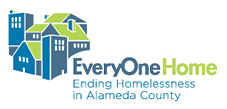Homeownership Program
Beware of Predatory Lending
Predatory lending is the practice of charging excessive fees, high interest rates and other abusive techniques that some mortgages lenders use to take advantage of borrowers, especially elderly homeowners who may have high levels of equity in their home. When buying or refinancing a home, protect yourself against excessive fees, high interest rates and other predatory lending tactics.
To protect yourself and the equity you have in your home:
- Recognize that you the right to rescind your loan within 3 days of signing
- Understand the difference between subprime and predatory lending (see below).
- Understand the "Don't borrow Trouble" warning signs before you enter into a new loan on your home.
- Contact Consumer Credit Counseling Services or Housing and Economic Rights Advocates for counseling and guidance.
The difference between Subprime and Predatory Lending
(Adapted from the City of Oakland's website.)
What is subprime lending?
Borrowers who have less than perfect credit, or who have had past credit problems, are less likely to qualify for conventional home loans. Often these borrowers' only option in obtaining a home loan is through the subprime market. Subprime loans typically have higher interest rates and fees, since these are higher-risk customers for the lending agency. Subprime loans are intended to be short-term, about 2-4 years, giving the homeowner a chance to pay back debts and clean up their credit. At that time they should be able to qualify for or refinance into a lower risk, lower rate loan from a major bank or savings and loan institution.
What is predatory lending?
A predatory loan can be undertaken by mortgage companies, creditors, brokers or even home improvement contractors, and involves engaging in deception or fraud, manipulating the borrower through aggressive sales tactics, or taking unfair advantage of a borrower's lack of understanding about loan terms. These practices are often combined with abusive loan terms such as: loan flipping, excessive fees and very high interest rates, lending without regard to the borrower's ability to repay, and outright fraud and abuse.
Predatory lending generally occurs in the subprime mortgage market, where most borrowers use the collateral in their homes for debt consolidation or other consumer credit purposes. Most borrowers in this market have limited access to the mainstream financial sector, yet some would likely qualify for prime loans. While predatory lending can occur in the prime market, it is ordinarily deterred in that market by competition among lenders, great homogeneity in loan terms and greater financial information among borrowers. In addition, most prime lenders are banks, thrifts, or credit unions, which are subject to extensive federal and state oversight and supervision, unlike most subprime lenders.
 Community Development Agency
Community Development Agency

 HOMEOWNERSHIP
HOMEOWNERSHIP

